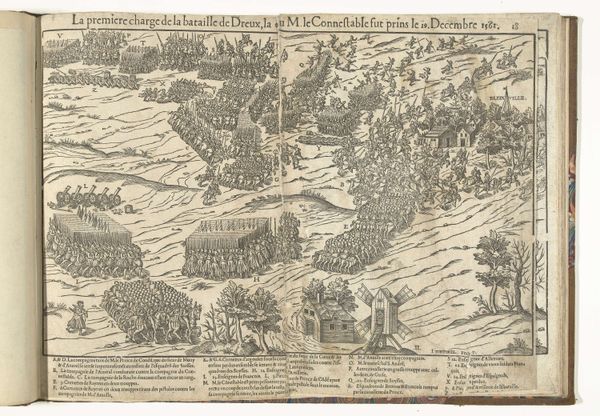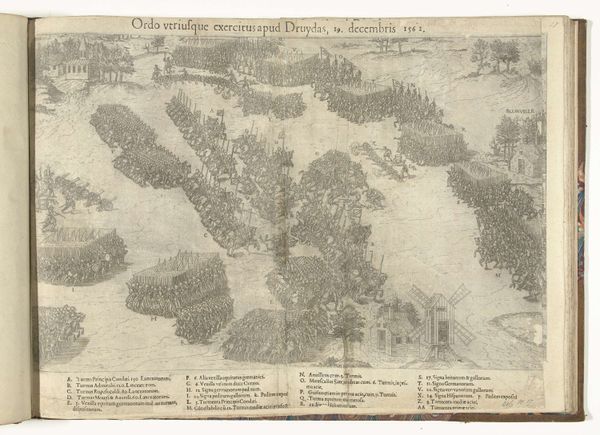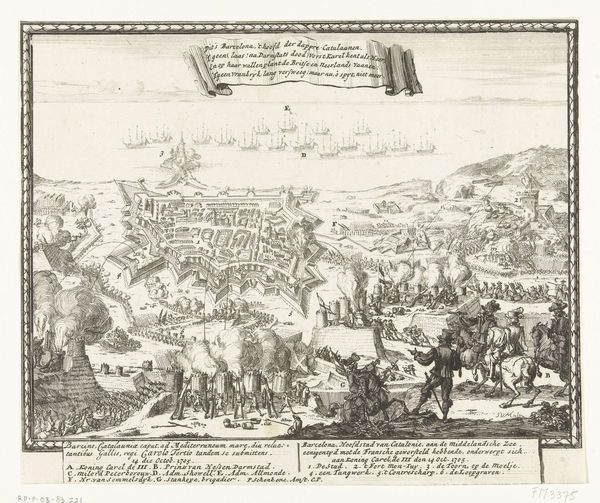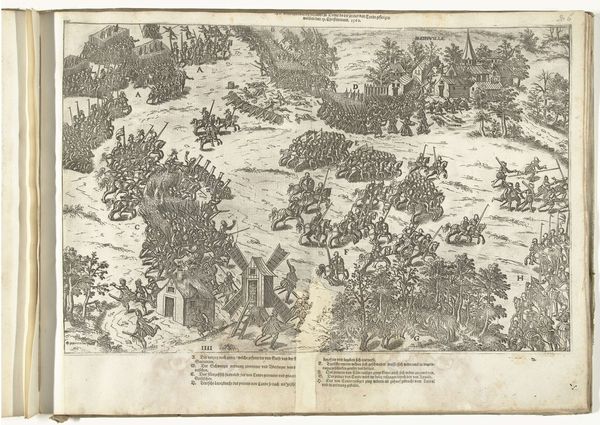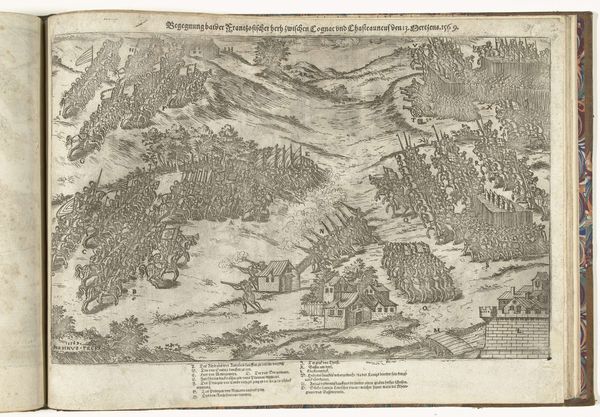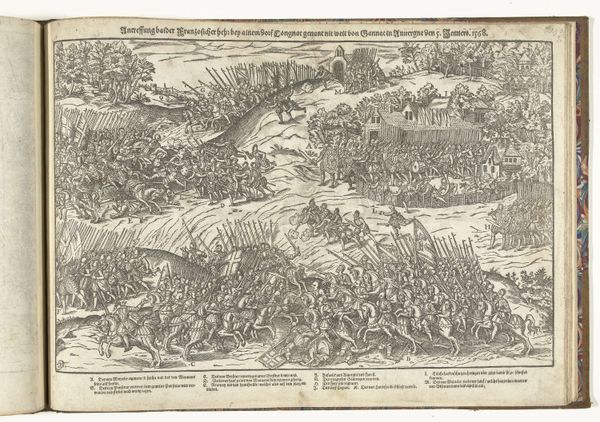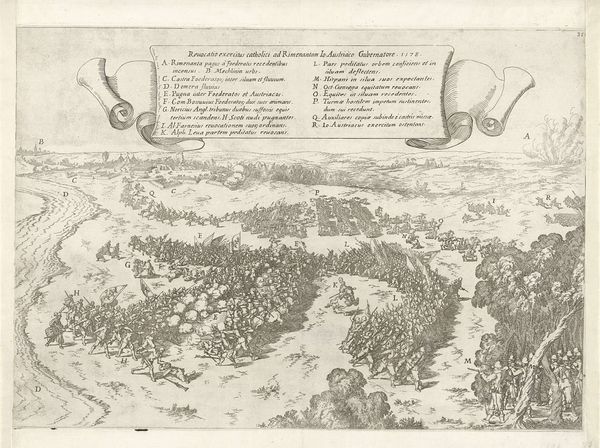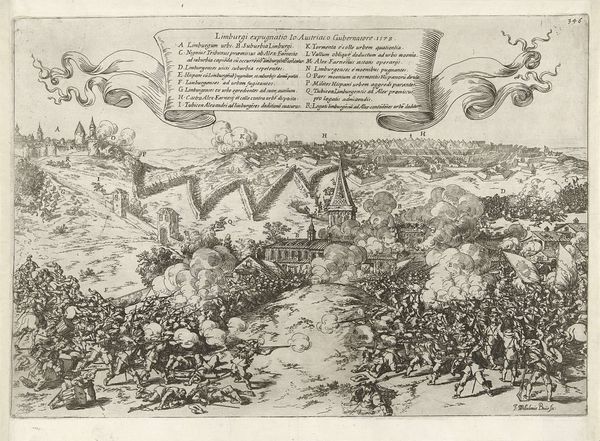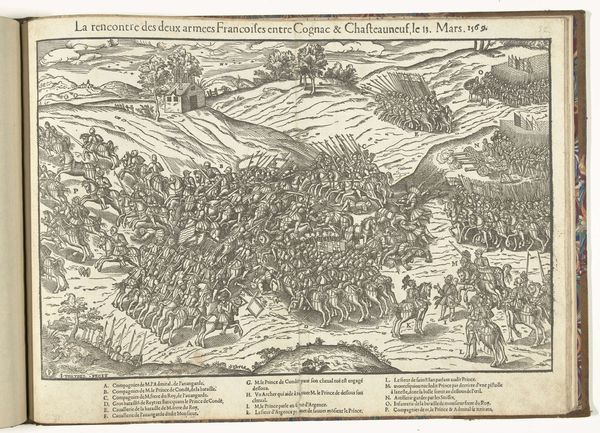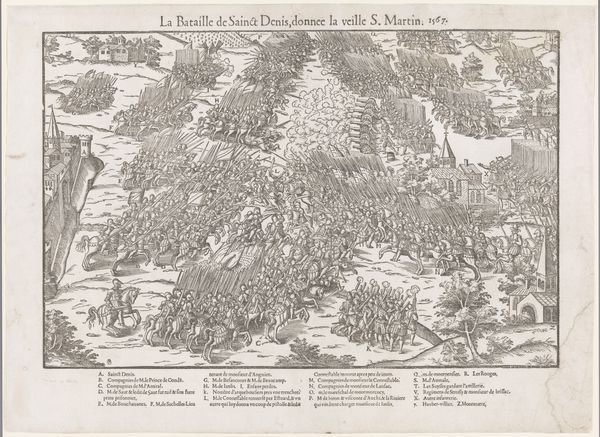
drawing, print, ink, engraving
#
drawing
#
narrative-art
# print
#
landscape
#
ink
#
history-painting
#
engraving
Dimensions: height 371 mm, width 485 mm
Copyright: Rijks Museum: Open Domain
Curator: This is "Slag bij Dreux, vierde treffen, 1562" (Battle of Dreux, Fourth Encounter, 1562), an engraving made around 1570 by Jean Perrissin. Look at how the forms are arranged, almost like a choreography. What's your immediate impression? Editor: It’s overwhelmingly bleak. The sheer mass of bodies rendered in such stark ink gives a real sense of claustrophobia and brutality. Curator: I agree. Note how Perrissin uses line to differentiate between foreground and background. The intricate hatching and density create depth. See the spatial relationship between the groups of soldiers? They are expertly placed to create balance, and provide visual interest. The diagonal lines add to a dynamic composition of movement. Editor: The battle took place during the French Wars of Religion. It's crucial to remember this wasn’t some abstract clash of armies; this was neighbor against neighbor, Protestant Huguenots fighting Catholic Royalists over religious freedom and control. Those formal lines you admire, that dynamism—they represent profound societal trauma. Curator: True, but Perrissin’s mastery is that he’s taken something chaotic, almost formless, and imposed a rigorous order upon it. It's a marvel of organization of shape. Editor: What I find particularly striking is the way this print, made years after the actual battle, serves as a piece of propaganda, reinforcing a particular historical narrative and the king's victory over religious dissidents. It minimizes the devastation and glorifies the triumph of the Crown, even as men fell on both sides. Curator: It also tells an interesting story about art and reproduction. Engravings such as this one enabled the mass dissemination of these events. The ability to represent the battle on paper made it accessible in a completely new way, it informed a sense of historical documentation. Editor: And that speaks to the complicated relationship between art and power. Here, technique serves a political end, visually constructing and justifying dominance in a time of crisis. It challenges us to unpack those layers of meaning within these artistic renderings of battles and wars, understanding how this shapes what we think of French religious wars. Curator: Indeed. Thinking about line and history together gives us so much to think about when considering "Slag bij Dreux." Editor: Absolutely, from the intricate detail to the brutal implications it throws so much light on how deeply impactful a single work can be.
Comments
No comments
Be the first to comment and join the conversation on the ultimate creative platform.
